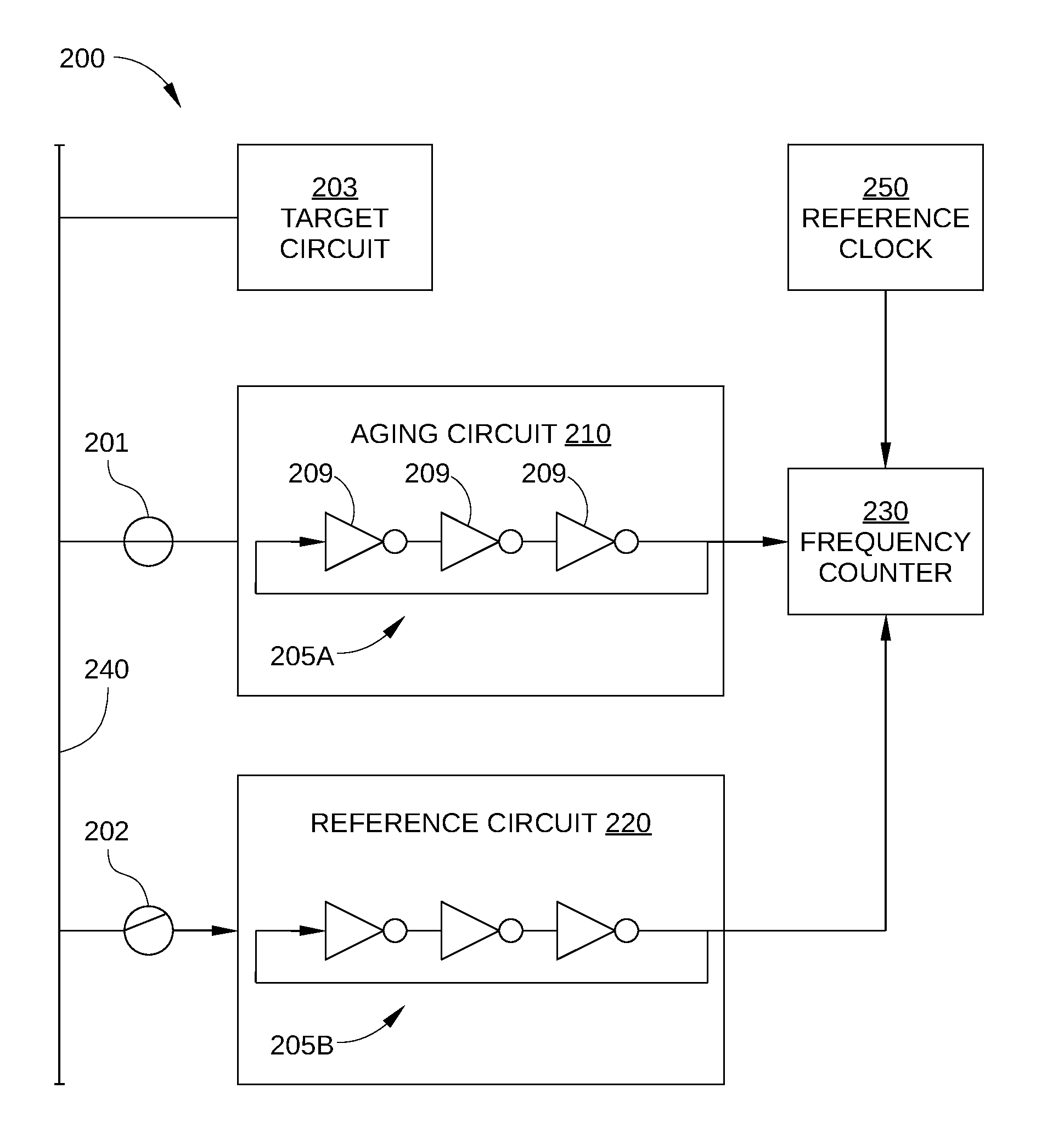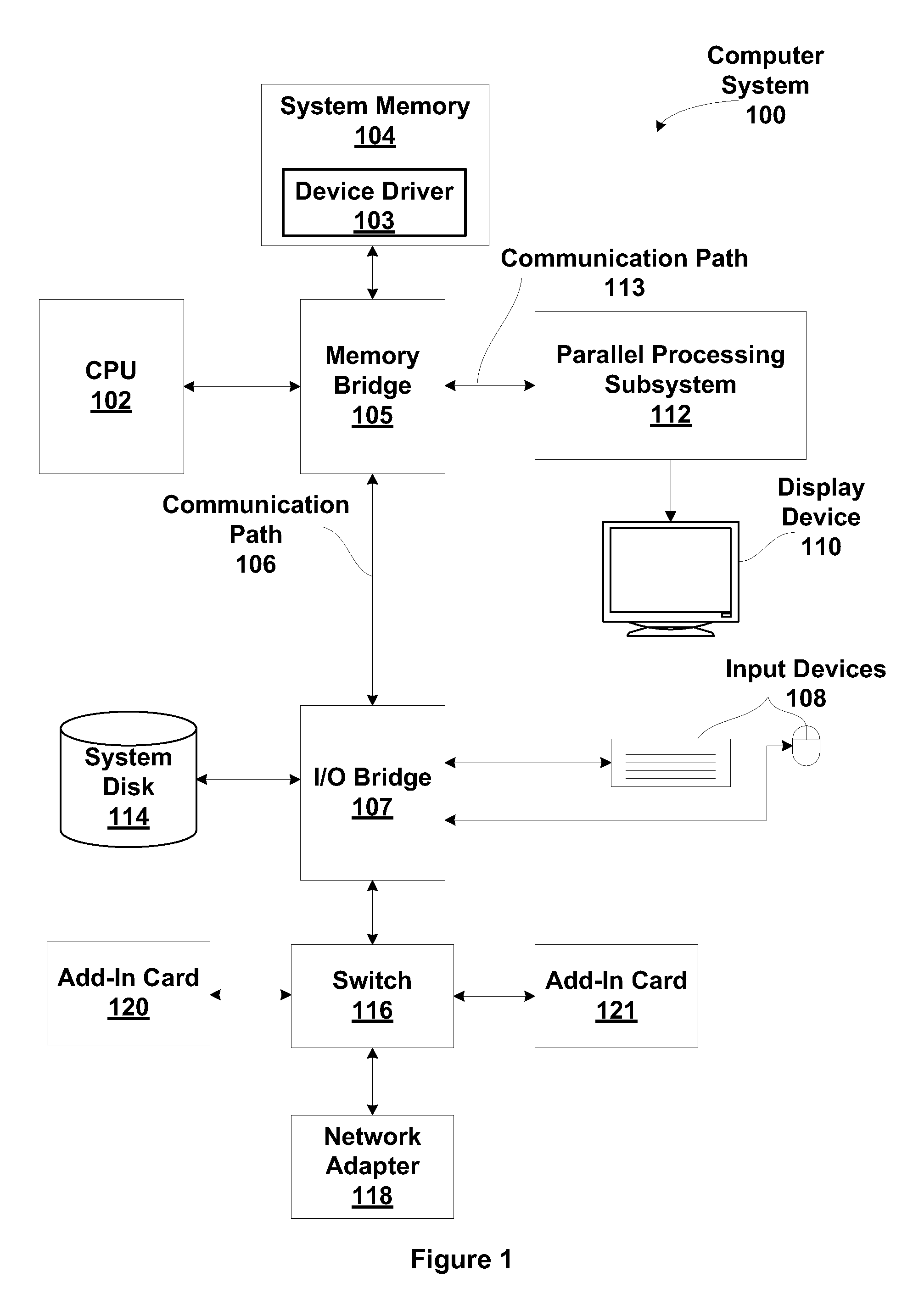Quantifying silicon degradation in an integrated circuit
a technology of integrated circuits and silicon degradation, which is applied in the direction of generating/distributing signals, pulse techniques, instruments, etc., can solve the problems of reducing the intrinsic speed of an affected sub-circuit and component, waste of power consumption, and unnecessarily slow performance for a large amount of the lifetime of the ic device, so as to reduce voltage margins, improve computing performance, and accurate measurement of semiconductor degradation over time
- Summary
- Abstract
- Description
- Claims
- Application Information
AI Technical Summary
Benefits of technology
Problems solved by technology
Method used
Image
Examples
Embodiment Construction
[0018]FIG. 1 is a block diagram illustrating a computer system 100 configured to implement one or more embodiments of the present invention. Computer system 100 includes a central processing unit (CPU) 102 and a system memory 104 communicating via an interconnection path that may include a memory bridge 105. Memory bridge 105, which may be, e.g., a Northbridge chip, is connected via a bus or other communication path 106 (e.g., a HyperTransport link) to an I / O (input / output) bridge 107. I / O bridge 107, which may be, e.g., a Southbridge chip, receives user input from one or more user input devices 108 (e.g., keyboard, mouse) and forwards the input to CPU 102 via communication path 106 and memory bridge 105. A parallel processing subsystem 112 is coupled to memory bridge 105 via a bus or second communication path 113 (e.g., a Peripheral Component Interconnect (PCI) Express, Accelerated Graphics Port, or HyperTransport link). In one embodiment parallel processing subsystem 112 is a grap...
PUM
 Login to View More
Login to View More Abstract
Description
Claims
Application Information
 Login to View More
Login to View More - R&D
- Intellectual Property
- Life Sciences
- Materials
- Tech Scout
- Unparalleled Data Quality
- Higher Quality Content
- 60% Fewer Hallucinations
Browse by: Latest US Patents, China's latest patents, Technical Efficacy Thesaurus, Application Domain, Technology Topic, Popular Technical Reports.
© 2025 PatSnap. All rights reserved.Legal|Privacy policy|Modern Slavery Act Transparency Statement|Sitemap|About US| Contact US: help@patsnap.com



